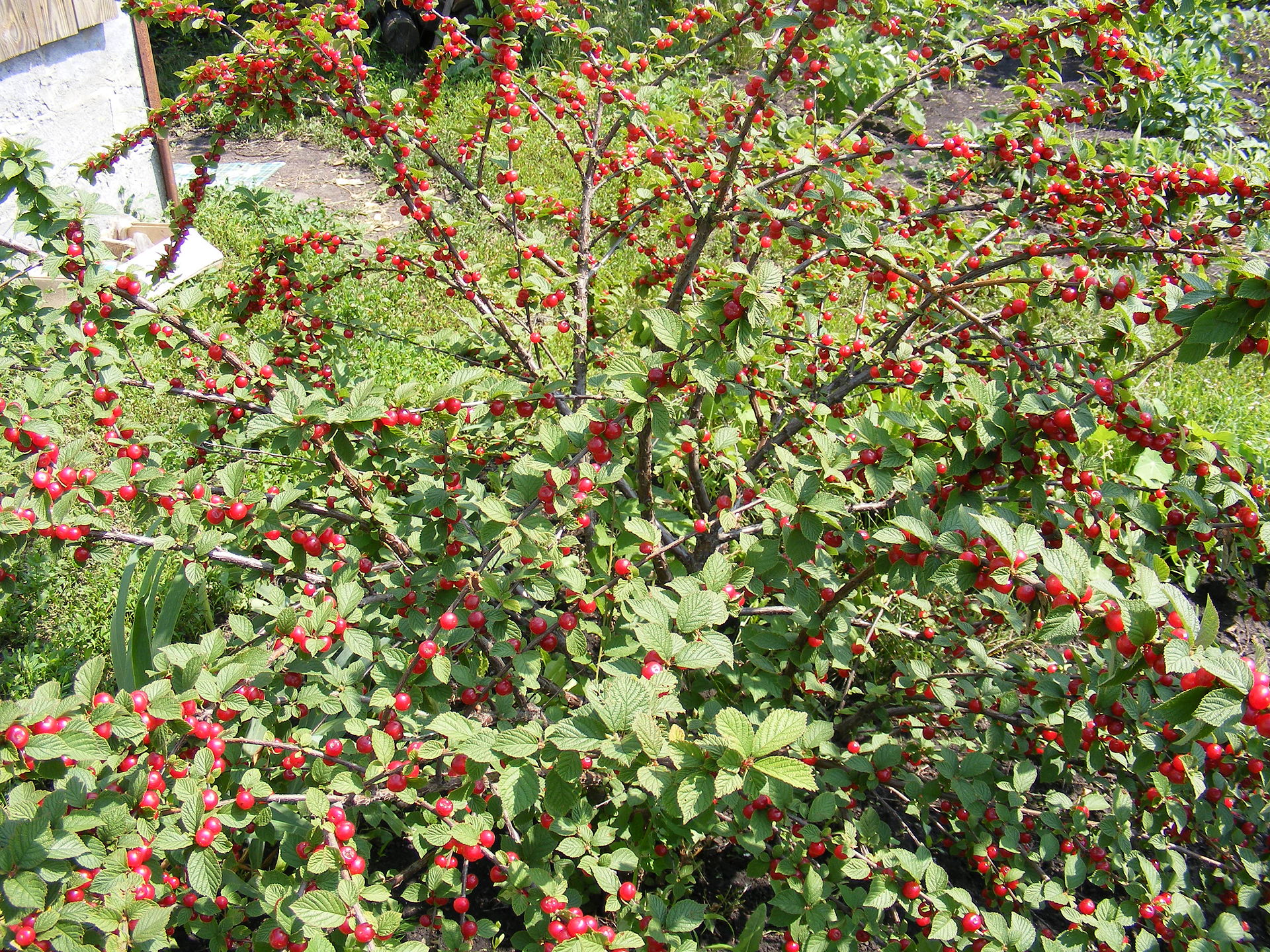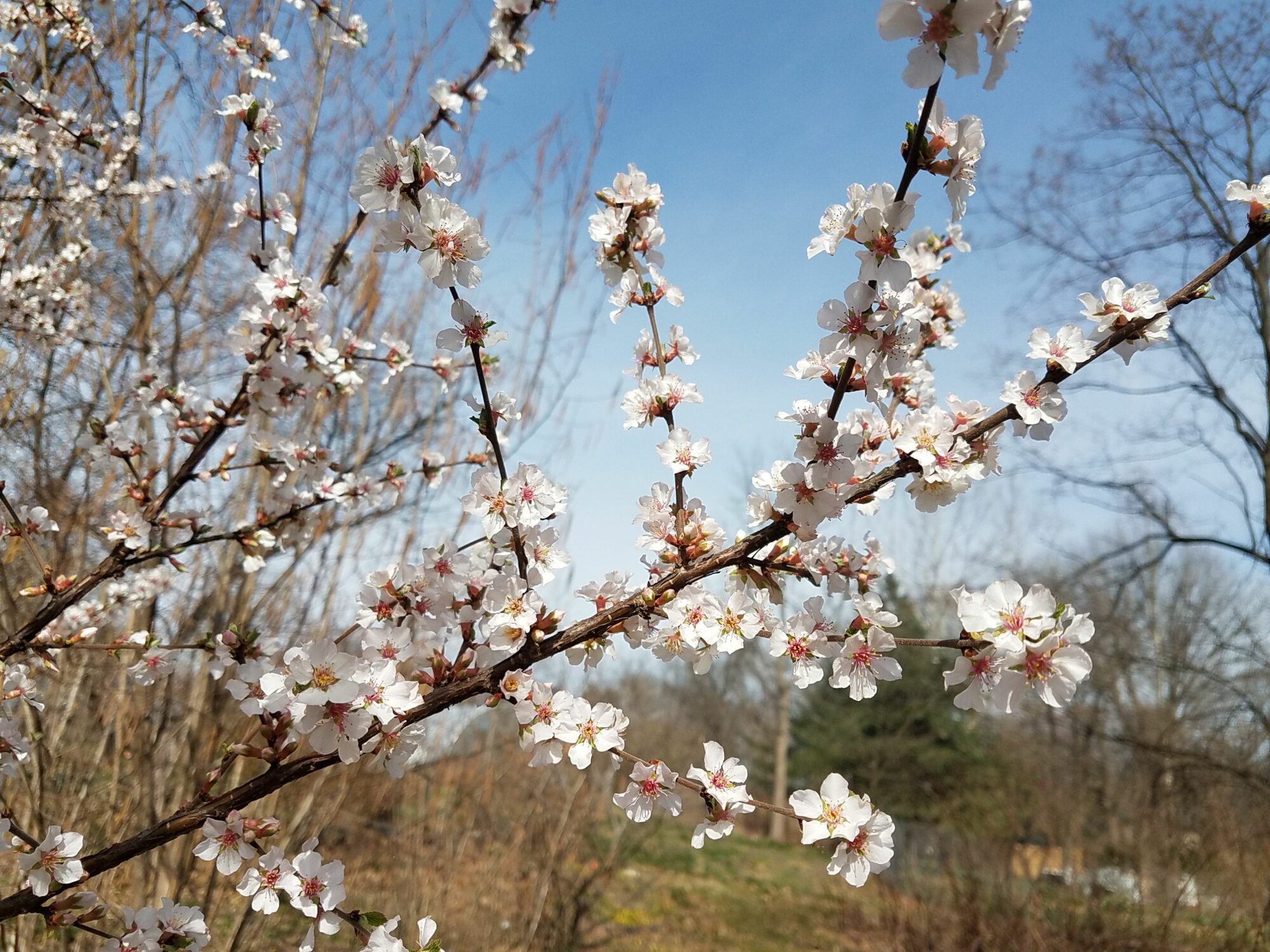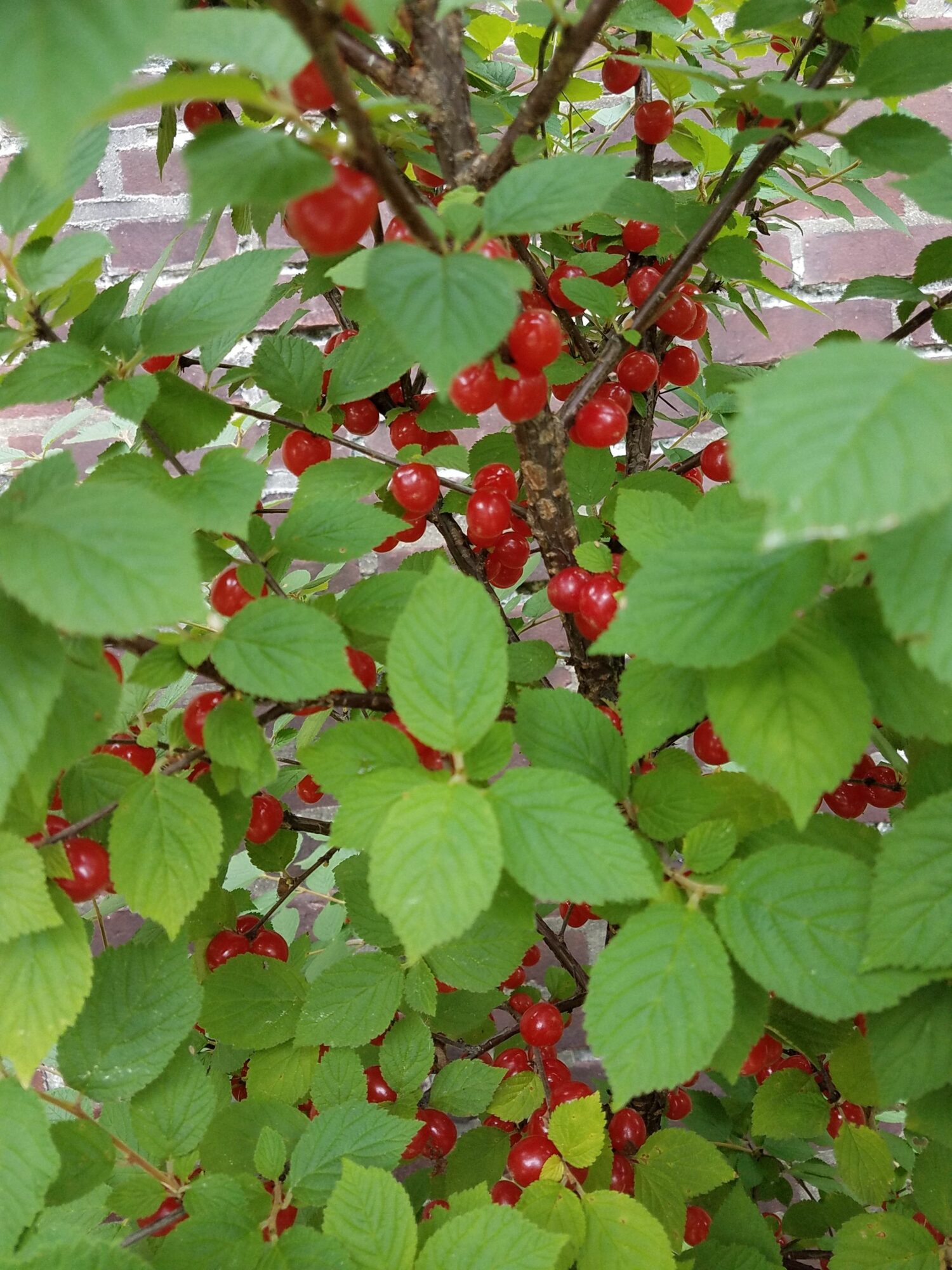One Tough Cherry!

Origins
The Nanking Cherry (Prunus tomentosa), goes by many names, including Manchu Cherry, Bush Cherry, and Mountain Cherry. Originally from central Asia and cultivated for hundreds of years, it was brought over to the United States from China in 1882. Having undergone naturalization in northern countries, it has become a staple backyard plant throughout the world. It was a well-received plant in the United States and sparked breeding programs in the 1920s with cultivars selected for improved fruit. By the 1940s, interest had waned and turned to other crops in favor of fruits with easier harvest and longer shelf-life. At one time, there may have been a large number of named varieties, but many have been lost over the last 100 years. Currently there are no known cultivars in production, sadly. Good news, though! In Russia, hope has not been lost for the Nanking Cherry, where it has been hybridized with other Prunus variety to create a more commercially viable fruit. In orchards, it is grown for its edible fruit. Elsewhere it is mostly grown as an ornamental plant, but sometimes used for bonsai, dwarfing rootstock for other cherries, or as a hedgerow windbreak.
Habitat
Nanking Cherry are particularly well adapted to nearly every climate and condition, including extreme cold, arid conditions, high elevation, and nearly all soil types. This shrub is particularly suited to cold winters and hot, dry summers. In the United States, Nanking Cherries are more common in the northeast, mid-Atlantic region, and the Grand Lakes region and is found growing in zones 3-7. It prefers well-drained, alkaline soil, but can handle dry conditions and prefers arid conditions over moist conditions. They can handle partial sun but will fruit more heavily with full sun exposure. They can handle strong winds and therefore can be planted in a wind-exposed area.
Description
Nanking Cherry is a deciduous, multi-stemmed shrub that usually get between 8 and 12 feet tall and wide. The shrub has a dense branching pattern making it a good barrier. The leaves are 1 inch wide and 3 inches long, serrated, and arranged alternately on the stem. The leaves are covered in a white, downy fuzz. The bark can range from orange to red-brown and exfoliates in thin strips. Its white or pink, fragrant flowers bloom early in spring and grow very prolifically along stem making the plant appear cotton candy-like. The flowers are very frost hardy and are one of the first orchard plants to flower in March. The small, 1/2 inch, red pitted berries ripen in June and July. The plant must be at least 2 years of age before it begins to fruit. Cross pollination is required for successful fruiting, meaning two or more Nanking Cherries should be planted within 100 feet of each other. To form a hedge, it can be planted 5 feet apart.
Nanking cherries require minimal ongoing care and have few pest and disease problems compared to other stone fruits. With proper care and conditions, they can live for 50 years. Over the years, POP has noted some unexplained branch dieback whose cause we have yet to diagnose; if this happens, just prune out the dead portions of the shrub and they generally recover.

(Source: POP)
Propagation
Nanking Cherry can be grown fairly easily from seed. If collecting your own seeds, remove seed from fully ripe fruit and wash pulp off seed. Dry the seeds in a shaded, well-ventilated room for a few days. Then store them in cold, moist conditions (in the fridge) for 100 days in a process called cold stratification. This can also be done by putting the seeds with moist sand or peat moss in a container. In the spring, once the 100 days of stratification are complete, plant the seeds outside or in pots. Alternatively, instead of the fridge method, you can plant the seeds outside in the fall and allow the winter to achieve cold stratification. If doing it this way, just keep the rodents away from those seeds by covering them or placing them in a cage.
If going the vegetative propagation route, take a softwood cutting (young, flexible stem) that measures 12 inches with 4 leaf nodes in the spring. Alternatively, you can take a 12 inch hardwood cutting with also 4 leaf nodes in the fall. Remove the bottom leaves of the cutting and treat the base with rooting hormone if you have access to any. Plant the cutting 2 inches deep in well-draining soil preferably in a pot. Place the cuttings in a sunny area and keep the soil and cuttings moist for a few months. They can be transplanted to a permanent location or a bigger pot once roots grow (which can be checked by lightly tugging on the cutting). If planting outside, dig a hole twice as wide as the pot, place the cutting in hole, and water it in.
Layering is another method where you can bury the mid-section or end (with at least 2 nodes) of an outward, low-lying branch in the soil using a brick to weight it down. Leave it until the buried branch grows roots and can be detached from the main plant using pruners.
The Fruit
Nanking cherries are abundant in their fruit production and stay fresh on the tree for two weeks after ripening. Once harvested, their short shelf life means they must be eaten fast (unless they are processed). Smaller than tree cherries, the fruit has been described as tasting both sweet and tart. The fruit can be eaten raw, processed into jam or jelly, or use in pies. They are mostly valued for their use in preserves, juice, wine, syrup, and pies. When cooking the fruit, pitting them might prove to be overly laborious, so its recommend to cook them in small amount of water. This will release the skin and seeds, which can be strained, leaving the liquid for making jelly or jam.

(Source: POP)
Recipes
Nanking Cherry Jelly
- 4 pounds ripe Nanking cherries
- 1.75 ounce package regular powdered fruit pectin
- 4 ½ cups sugar
- Wash cherries and drain. De-stem cherries and place in a pot. Barely cover cherries with water. Bring to a simmer (do not boil as flavor will be lessened). Simmer, uncovered, about 20 minutes or until the skin on the cherries starts to split, mashing cherries during cooking. Remove from heat.
- Strain the liquid from the pulp into another pot. Add the pectin. Turn the heat on high, stirring constantly, until it comes to a full rolling boil. Add sugar and stir. Return to boiling for 1 minute, stirring constantly. Remove from heat. Quickly skim off foam with a metal spoon.
- Pour mixture into sterilized jars (subjected to boiling water for a minute or two) half-pint jars, leaving a 1/4-inch headspace. Clean lids and screw on top of jars. Place jars in either a boiling-water bath canner or standard pot filled with water and return water to boiling. Keep jars in boiling water for 5 minutes.
- Remove jars and allow them to cool. When jars are completely cool (12 to 24 hours), press the center of each lid to check the seal. If the dip in lid holds, the jar is sealed. If lid bounces up and down, the jar isn’t sealed, which means it can be refrigerated and used within two to three days. The sealed jar jelly will last much longer.
Nanking Cherry Pie
- Filling:
- 6 cups pitted nanking cherries
- 2 cups white sugar
- 1 tbsp flour
- Crust:
- 2/3 cup lard or butter
- 2 cups flour
- 3-6 tbsp cold water
- Pit sour cherries if you haven’t done so already.
- Combine cherries, sugar, and flour in a bowl.
- Combine pie ingredients in bowl. Add more water if too dry.
- Divide dough into 2 balls.
- Roll out one pie dough ball and place into a 9 inch pie plate. Trim the edges off.
- Pour cherry mixture into pie shell.
- Roll out the other pie dough ball and use it to cover the pie. Poke holes in the crust with a fork if you aren’t making a lattice.
- Press a fork around the edges to seal the dough.
- Bake at 375 degrees for around 1 hour, until the crust is golden brown.
- Let cool slightly and top with whipped cream or ice cream.
Sources
USU Nanking Cherry: https://extension.usu.edu/yardandgarden/research/nanking-cherry-in-the-garden
Jelly Recipe: https://www.midwestliving.com/recipe/nanking-cherry-jelly/
Pie Recipe: https://shiftingroots.com/sour-cherry-pie/
Disclaimer
The information presented on this website is for informational, reference, and educational purposes only and should not be interpreted as a substitute for diagnosis and treatment by a health care professional. Always consult a healthcare professional or medical doctor when suffering from any health ailment, disease, illness, or injury, or before attempting any traditional or folk remedies. Keep all plants away from children. As with any natural product, they can be toxic if misused.
This POP Blog was written by Orchard Assistant Simone Shemshedini with help from Co-Executive Director Phil Forsyth.
SUPPORT US! If you found this entry useful, informative, or inspiring, please consider a donation of any size to help POP in planting and supporting community orchards in Philadelphia: phillyorchards.org/donate